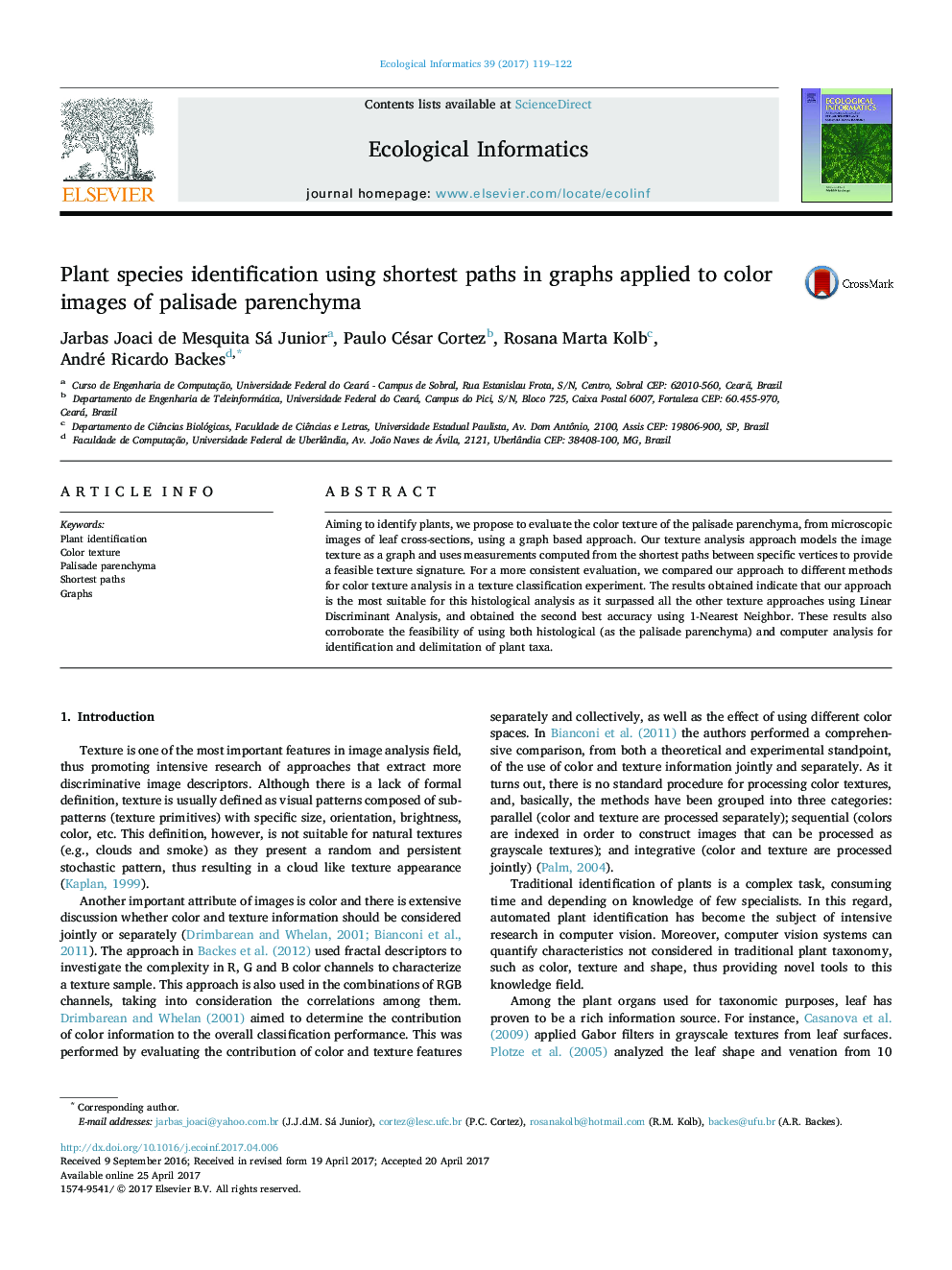| Article ID | Journal | Published Year | Pages | File Type |
|---|---|---|---|---|
| 5741947 | Ecological Informatics | 2017 | 4 Pages |
â¢In this study, we propose to evaluate the color texture of the palisade parenchyma.â¢We model a color texture as a non-oriented weighted graph.â¢Each pixel is represented as a vertex and an edge connects two vertices if a neighborhood rule is satisfied.â¢Then, we explore the shortest paths between pairs of pixels in different scales and orientations of the image.â¢A feature vector is built from shortest path statistics.
Aiming to identify plants, we propose to evaluate the color texture of the palisade parenchyma, from microscopic images of leaf cross-sections, using a graph based approach. Our texture analysis approach models the image texture as a graph and uses measurements computed from the shortest paths between specific vertices to provide a feasible texture signature. For a more consistent evaluation, we compared our approach to different methods for color texture analysis in a texture classification experiment. The results obtained indicate that our approach is the most suitable for this histological analysis as it surpassed all the other texture approaches using Linear Discriminant Analysis, and obtained the second best accuracy using 1-Nearest Neighbor. These results also corroborate the feasibility of using both histological (as the palisade parenchyma) and computer analysis for identification and delimitation of plant taxa.
